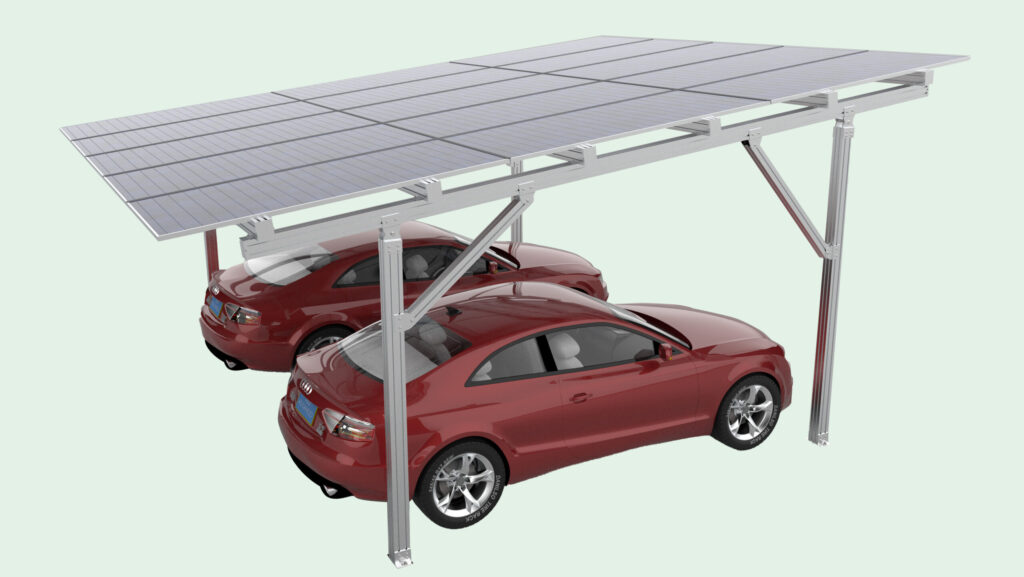Key Safety Maintenance Considerations for Solar Panels During Thunderstorms
Direct Lightning Strike Prevention and Structural Reinforcement
Solar panels installed on rooftops or open fields are highly vulnerable to direct lightning strikes. To mitigate this risk, install air terminals (lightning rods or lightning strips) at the highest points of the solar array, ensuring they extend at least 0.5 meters above the panels. The protection radius of air terminals should cover the entire array, calculated using the rolling sphere method with a 45-meter radius for Class II lightning protection systems. For example, a 100 kW ground-mounted solar farm in coastal regions requires at least four strategically placed air terminals to achieve full coverage.
Structural integrity is equally critical. All mounting brackets, clamps, and support frames must be securely fastened using stainless steel bolts with torque specifications matching the manufacturer’s guidelines. In areas prone to typhoons, reinforcing the array with diagonal wind braces can reduce lateral sway by up to 40%. A 2024 case study in Fujian Province showed that arrays with wind braces sustained 70% less damage during Typhoon Doksuri compared to unreinforced systems.
Grounding System Optimization and Resistance Control
A low-impedance grounding network is the backbone of lightning protection. The grounding resistance for solar arrays should be maintained below 10 ohms, with critical components like inverters requiring values below 4 ohms. In high-resistivity soil areas, adopt chemical grounding rods or deep-drilled electrodes reaching moisture-rich layers. For instance, a solar plant in Gansu Province reduced grounding resistance from 25 ohms to 3.8 ohms by installing 8-meter-long copper-clad steel electrodes.
Equipotential bonding is essential to prevent side-flashing. Connect all metallic components—including panel frames, cable trays, and equipment enclosures—using 16 mm² copper conductors. A 2023 analysis of 127 lightning-damaged arrays revealed that 68% of failures stemmed from inadequate equipotential bonding between panels and support structures.
Surge Protection Device (SPD) Deployment Strategy
Install Type II SPDs at the DC combiner boxes and Type I+II combination SPDs at the inverter input terminals. These devices should have a nominal discharge current (In) of at least 20 kA (40 kA recommended for lightning-prone regions) and a voltage protection level (Up) below 1.5 kV. For AC side protection, use Type III SPDs at distribution panels with In ≥10 kA.
The wiring layout significantly impacts SPD effectiveness. Keep DC positive and negative conductors in the same conduit to minimize loop area, reducing induced voltages by up to 60%. A 2022 field test in Guangdong showed that arrays with co-located DC cables experienced 3.2 times fewer SPD failures compared to systems with separated cables.
Pre-Storm Inspection and Emergency Protocols
Conduct bi-annual inspections of lightning protection components, focusing on:
- Corrosion of grounding conductors (replace if oxidation exceeds 30% of cross-section)
- Mechanical damage to air terminals (cracks or bending beyond 5°)
- Loose connections in equipotential bonds (torque values must meet IEC 62305 standards)
Develop a thunderstorm emergency plan that includes:
- Automatic shutdown of inverters when lightning activity is detected within 10 km
- Remote monitoring alerts for ground fault currents exceeding 30 mA
- Post-storm checklists for visual inspection of panel cracks, delamination, and burned connectors
A 2025 survey of 200 solar plant operators found that facilities with automated shutdown systems reduced equipment damage rates by 58% during thunderstorm seasons.
Post-Lightning Damage Assessment and Recovery
After a thunderstorm, perform a tiered inspection:
- Visual Inspection: Check for physical damage to panels, inverters, and cabling
- Electrical Testing: Measure insulation resistance (should exceed 1 MΩ) and continuity of grounding paths
- Performance Analysis: Compare current-voltage curves against baseline data to identify degraded modules
For confirmed lightning damage, prioritize replacement of SPDs (which typically fail after a single discharge) before restoring operation. A 2024 study revealed that 42% of secondary failures occurred because damaged SPDs were not replaced promptly.
Long-Term Resilience Enhancement
Incorporate lightning-resistant design features in new installations:
- Use frameless dual-glass panels to eliminate conductive paths for side-flashing
- Install arrays at a 15–20° tilt angle to reduce hail accumulation and water ponding
- Apply hydrophobic coatings on panel surfaces to prevent moisture-induced tracking
For existing systems, consider retrofitting with advanced protection:
- Early streamer emission (ESE) air terminals that extend protection range by 30%
- Smart SPDs with remote monitoring and automatic reset capabilities
- Non-metallic cable trays to eliminate induction loops
By implementing these measures, solar plant operators can reduce lightning-related downtime by up to 75% while extending system lifespan beyond 30 years. Continuous investment in protection technologies remains essential as global lightning frequency increases by 12% per decade due to climate change.


